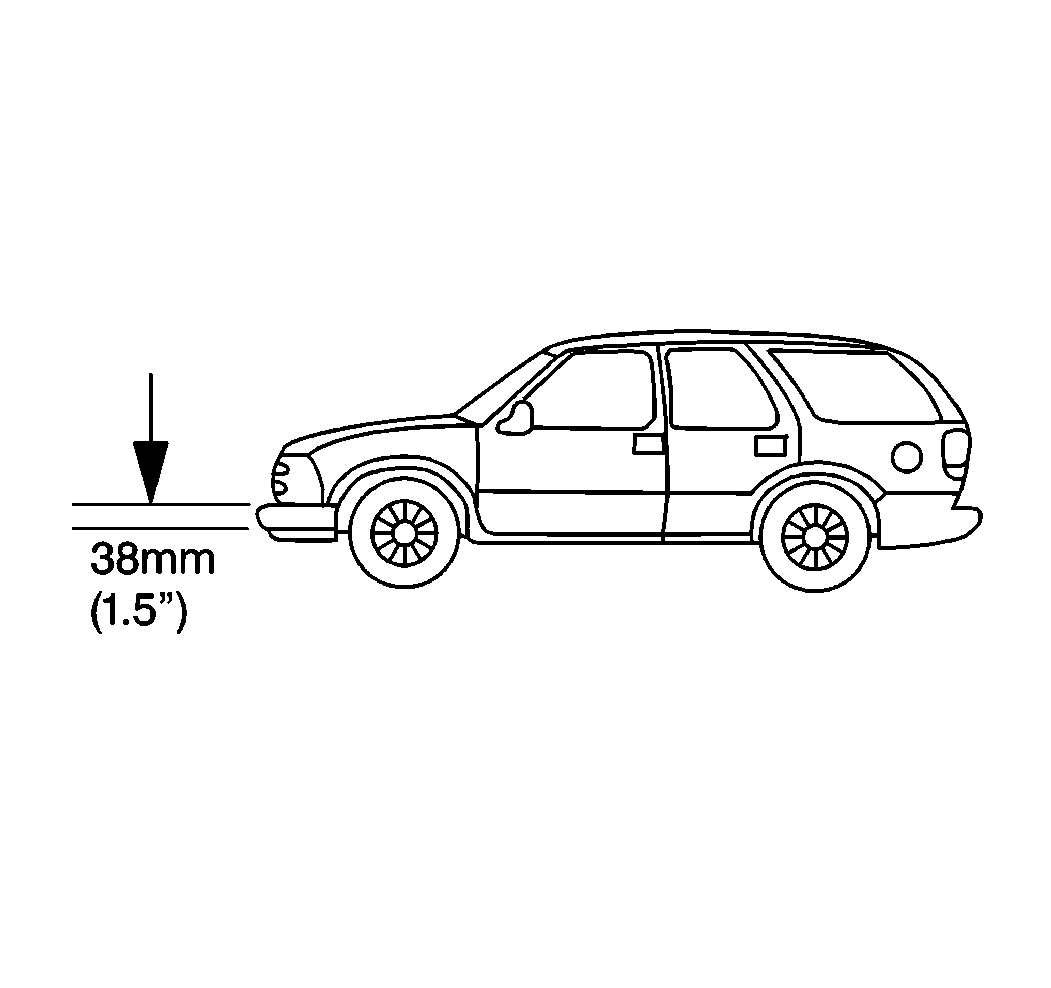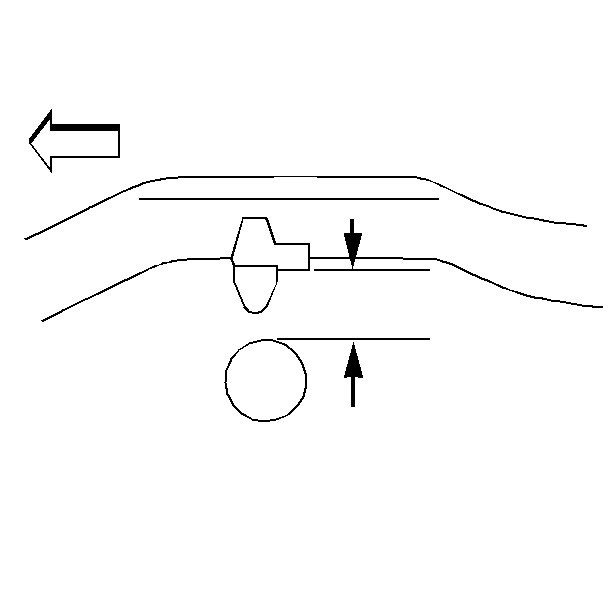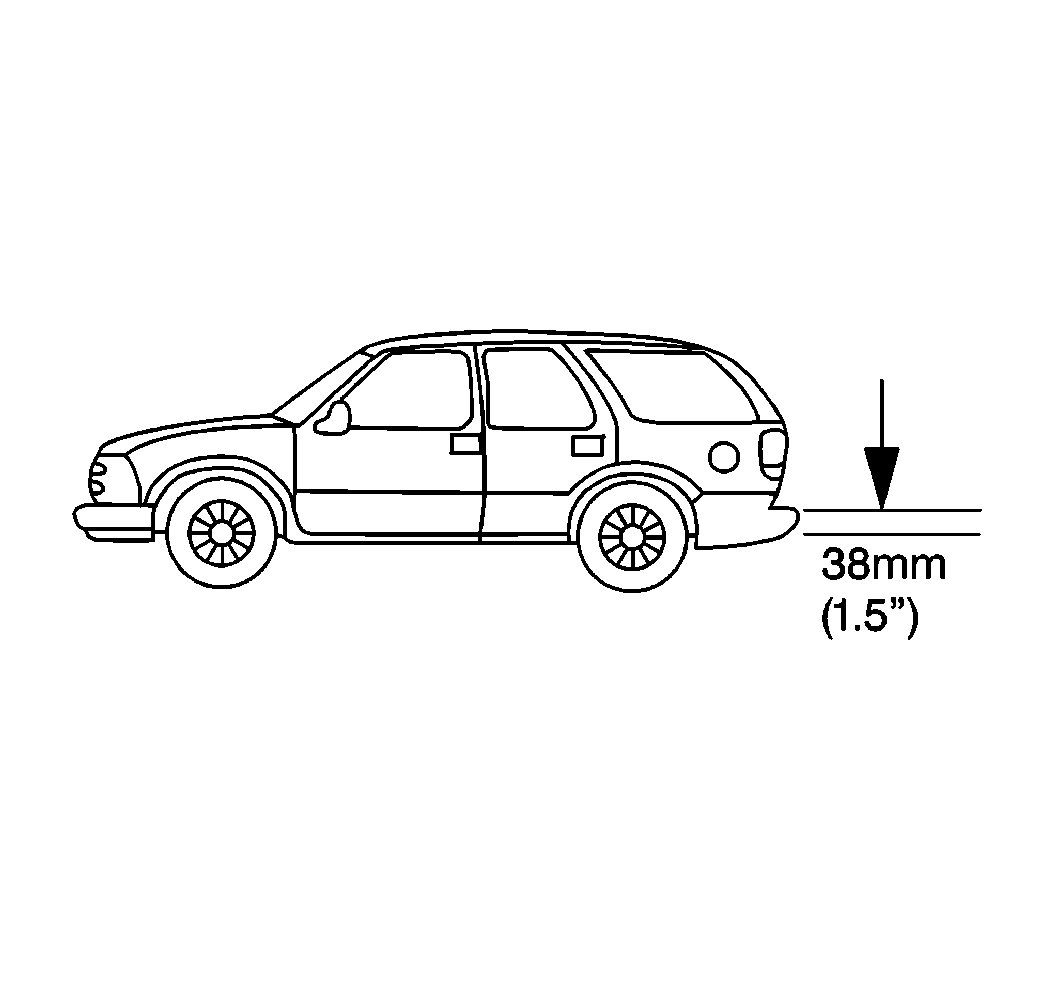Z Height
Trim height is a predetermined measurement relating to vehicle ride height. Incorrect trim heights may cause symptoms similar to alignment problems. Check the trim heights when you diagnose steering or vibration complaints.
The Z dimension measurement determines the proper ride height for the front end. The Z dimension is different for RWD vehicles and S4WD or F4WD vehicles. The S4WD and F4WD vehicles have different points of measurement to determine Z height. Use the torsion bar adjusting arm in order to adjust Z height. RWD vehicles have no adjustment and could require replacement of suspension components.

On RWD vehicles, measure Z height from the center line of the bolt of the front lower control arm down to the lower inboard corner of the ball joint. Trim all Z heights at 89.0-101 mm (3.5-4.0 in).

On S4WD and F4WD vehicles, measure Z height from the center line of the pivot bolt (1) down to the lowest inboard edge of the steering knuckle (2).

For S4WD and F4WD vehicles, use the following measurements:
| • | K1 and K2 models (except K10906 with L65 or K20906 with C6P) trim the Z height at 151.0-163.0 mm (5.9-6.4 in). |
| • | K1 and K2 models (K10906 with L65 or K20906 with C6P) trim the Z height at 139.0-151.0 mm (5.5-5.9 in). |
| • | K3 models trim the Z height at 139.0-151.0 mm (5.5-5.9 in). |
Z Height Measurement
Measure the Z height using the following procedure:
- Lift the front bumper of the vehicle up around 38 mm (1.5 in).
- Gently remove your hands. Let the vehicle settle by itself.
- Repeat the jounce operation two more times for a total of three times.
- Measure the Z dimension.
- Push the front bumper of the vehicle down about 38 mm (1.5 in).
- Gently remove your hands. Let the vehicle rise by itself.
- Repeat the jounce operation two more times for a total of three times.
- Measure the Z dimension.
- Find the average of the high and low measurements. This is the true Z dimension.

Important: True trim height is the average of the high and low measurements.
D Height
The D dimension measurement determines the proper rear end ride height. There is no adjustment procedure. Repair may require replacement of suspension components.

D Height Measurement
Measure the D height using the following procedure:
- Lift the rear bumper of the vehicle up around 38 mm (1.5 in).
- Gently remove your hands. Let the vehicle settle by itself.
- Repeat the jounce operation two more times for a total of three times.
- Measure the D dimension.
- Push the front bumper of the vehicle down about 38 mm (1.5 in).
- Gently remove your hands. Let the vehicle rise by itself.
- Repeat the jounce operation two more times for a total of three times.
- Measure the D dimension.
- Find the average of the high and low measurements. This is the true D dimension.

Important: True trim height is the average of the high and low measurements.
